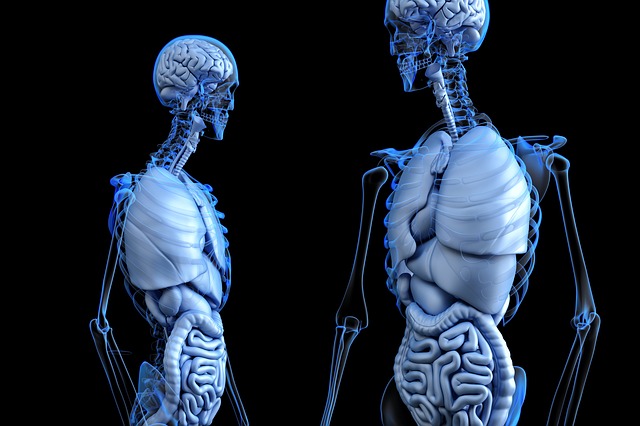 |
| Insulin resistance is thought to begin in the liver. |
Insulin resistance is believed by some to be a path that progresses in a particular order, but I couldn't find anything to actually back that up.
However, since insulin resistance in the liver is characterized by insulin's inability to turn off glucose production (gluconeogensis), due to the liver not seeing the insulin and believing that the blood sugar is too low, it does make sense that insulin resistance would begin with the liver.
Since glucose production no longer shuts off, both obese and Lypodystrophic patients (those with no adipose tissue for storage purposes) with insulin resistance have an increased amount of fat hidden in the liver.
Liver cells, as well as the spaces between liver cells, fill with fat, so the liver becomes enlarged and heavier. Plus you may also have gallstones composed of cholesterol and bile salts.
When the liver is full of fat, it can't filter and cleanse the blood as efficiently, so the bloodstream becomes clogged with toxins and excess fatty acids (triglycerides).
The liver will also overproduce most of the known cardiovascular risk factors, such as:
- VLDL
- glucose
- CRP (C-reactive Protein)
- PAI-1 (Plasminogen Activator Inhibitor-1)
- fibrinogen
- and coagulation factors
How Common is a Fatty Liver?
Fatty liver is the most common cause of increased liver enzymes, a sign of inflammation and liver damage.
And among the obese, fatty liver is seen in 90% of adults and 53% of children. While 90% shows the magnitude of the problem of insulin resistance, at least at beginning levels of the syndrome, it also shows that for 10% of the obese population there is no fatty liver, and therefore, no insulin resistance.
Those 10%, even though obese, are actually insulin sensitive.
Development of fatty liver comes from an imbalance between the influx and production of fatty acids, and the use of those fatty acids for oxidation or the secretion as VLDL triglycerides.
What Does Large VLDL Particles Really Mean?
There is a strong relationship between increased liver fat and the overproduction of large VLDL particles, the particles many low carbers brag about having, since insulin is unable to regulate their production.
So while large, fluffy VLDL particles are a good thing as far as not being able to slip underneath blood vessel linings, a large amount of them circulating in the bloodstream is a sign or symptom of fatty liver disease.
Excess glucose produced in the liver is not the only source of excess triglyceride:
- alcohol
- sugar/fructose
- high-fat foods (especially red meat and dairy)
- birth control pills
- steroids
- and diuretics
And let's not forget heredity.
How to Get Triglycerides Under Control
The good thing is that in addition to weight-bearing exercise and aerobic activity, a low-carb diet is set up in such a way as to help you burn a lot of those excess, damaging triglycerides.
Blood triglyceride numbers tend to improve greatly once you enter into a low-carb diet, without having to do anything else.
The bad news is it's extremely hard to burn liver fat.
Plus, when the body is burning viseral fat, it doesn't always show up on the scale, or in inches, so there's the temptation to abandon the diet, even though it's actually working.
Not everyone is willing to do what it takes to reverse insulin resistance, but for those who are, it's very important to work on making your current dietary lifestyle a way of life, rather than something you plan on doing just for the short term.
Because if you return to your old ways and habits, the insulin resistance will also come back.



Thanks for the great information
ReplyDeleteYou're welcome.
ReplyDelete